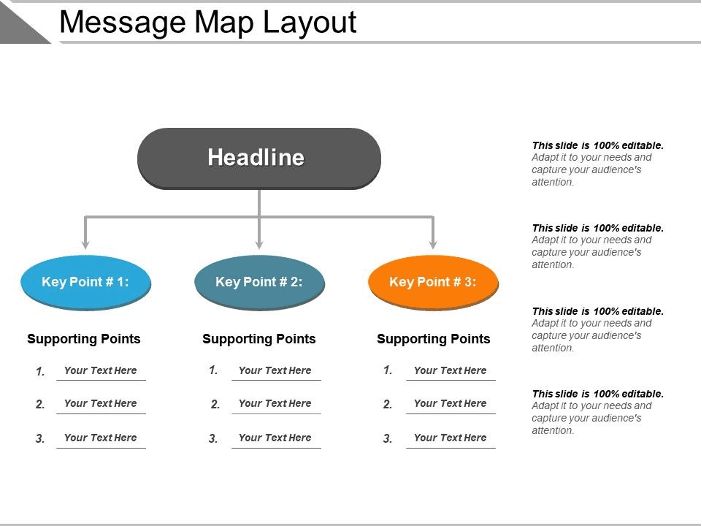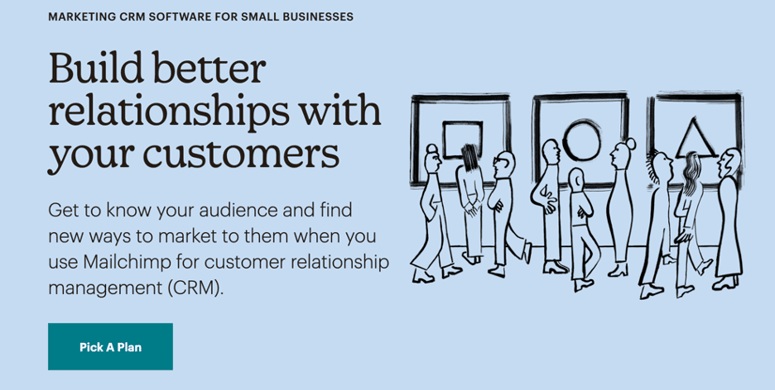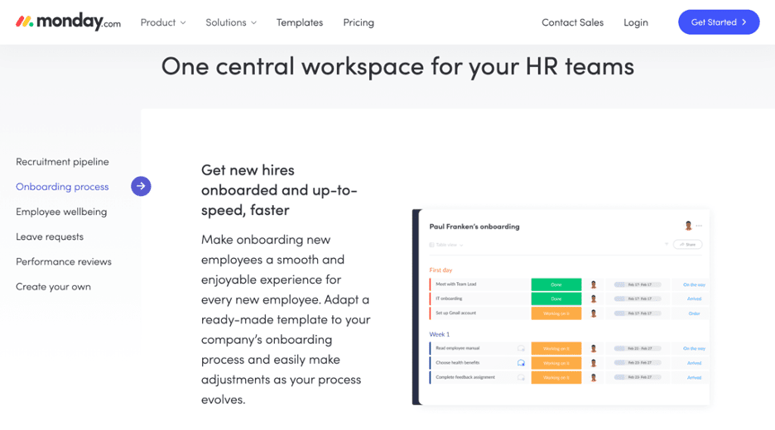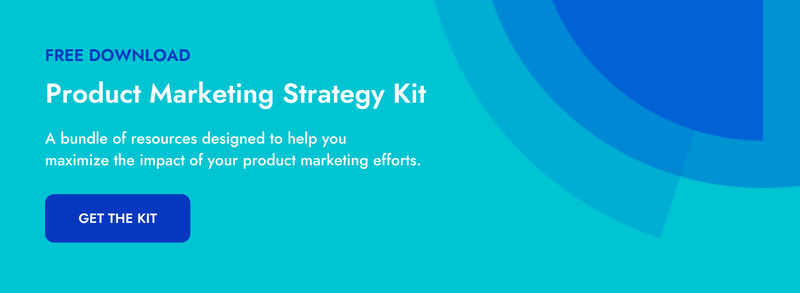Let’s face it—your product doesn’t sell itself. Most products just don’t. That’s why product marketing focuses on defining the positioning for your solution and the messaging your team should use to talk about it with potential customers.
One key component of making sure this happens? The message map.
Whether you’re looking to improve your message maps or getting started putting your first one together, here are some tips to make this an essential product marketing resource for your whole team.
But before we jump into those tips, let’s make sure we’re all clear on what a message map is and why it’s so important anyway.
Elevate your product marketing strategy with this free kit >>
What is a message map?
A message map is a document that provides an overview of your company’s positioning for your product or offering. This positioning is so important for going beyond what your product or offering is and defining what it does. That’s what is going to connect with your potential customers and, even more importantly, differentiate your brand from your competitors.
A message map will usually include headlines, key points, and supporting details that explain the benefits of your product for a specific segment of your audience.

The supporting information should be examples, use cases, proof points, even customer quotes so that these are documented all in one place.
(Note: Some marketers may prefer to keep these kinds of information—use cases, customer quotes, etc.—in an appendix and write supporting points that are ready for external use. There's no right or wrong way to go about this; how you structure your message map is, in part, a question of personal preference and style.)
But the primary goal for a message map isn’t necessarily documenting. It’s aligning your messaging across your marketing channels and across the departments in your company. The most effective message maps are resources for your team. A sales rep might review a message map before a call, for instance, while an email marketer might copy headlines to use in their newsletter. When your team uses the message map, the result is consistent product positioning and stronger brand identity. That’s all great for your business.
That’s why we’re sharing these tips for creating a message map for your team. If you’re following these tips, your message map can be more than simply writing headlines and documenting positions for a product—it can be an invaluable resource for your team.
How to create an effective message map for your team
Now that we’ve covered what a message map is and how it’s meant to be used, here’s how to make sure you’re creating the most impactful resource you can.
1. Start with your personas
When you’re writing anything, it’s helpful to start by identifying some basics, like the topic, the purpose, and the audience. Your buyer personas are the best place to start when you’re working on a message map, because they’re your audience.
Your buyer personas should include basic demographics, company and job information, as well as what motivates and frustrates these ideal customers. For your message map, you’ll want to focus on these motivations and frustrations.
Take a look at Mailchimp’s product copy as an example.

Mailchimp’s marketing CRM is specifically designed for small businesses, and its product messaging here speaks to that. Acquiring customers is so much more expensive than keeping existing ones, so small businesses thrive on long-standing customer relationships. The headline and the copy underneath it emphasize how the tool can help small businesses foster these.
That’s the kind of persona-specific appeal you want in your message map.
Also, it’s worth noting that because you most likely have more than one buyer persona, you’ll want to segment your message map with a section or two addressing each relevant persona.
By segmenting your message map by buyer persona, you can get incredibly specific in your copy. That means headlines that speak to frustrating problems, proof points that hold weight, and—perhaps most importantly—benefits that are irresistible for your personas.
2. Focus on benefits
If you’ve written any product copy, you’ve probably been told to focus on benefits and not features. The features are important, but the benefits are what compels people to make a purchase.
Here’s an example. The features of a rug might be the color, the plush padding, and the grip. The benefits would be the forgiving shade that’s easy to clean, the comforting, cushiony step to start your day, and the assurance that you don’t have any loose corners that toddlers or grandparents can trip on.
When you’re writing your message map, you want to make sure your copy focuses on these benefits. This will help make your messaging more compelling for your audience and make your message map a better resource for your team to use—which leads us to the next tip.
3. Format your message map for use
Your message map is meant to be used, so it’s important to write it that way. That means formatting it with use in mind.
You want most members of your team referencing this document, whether they’re looking for a way to stress a product’s major benefit or they’re reading your message map start to finish as a part of onboarding. Making your message map skimmable will help.
Using H2s, bullets, tables, and more will guide your reader through the message map. These structural elements will also convey important information at a glance, including which benefits have the most supporting information, which taglines work for which personas, and the hierarchy of importance in your messaging strategy.
You can even include bullets with proof points and customer quotes in your supporting points so these are ready to copy and paste. That makes for an even better resource for your team, and an even better tool for your business. Clearly presenting your product messaging will help everyone in your company understand it and, even better, stay consistent.
4. Check your competitors’ messaging
Your product doesn’t exist in a vacuum, so your messaging shouldn’t, either. When you’re working on your message map, it’s important to check out what your competitors are doing.
If you’re doing an overall competitor messaging analysis, you’d want to take a look at their homepage, ad copy, press releases, emails, and more. For your message map, though, you should focus on their product pages.
Let’s consider an example. If I’m working on a message map for an HR planning tool, I might look at Monday.com’s product page that focuses on their tool’s use case for HR.

Here, Monday showcases the benefits—easier onboarding and less time setting up one-off structures—and emphasizes speed. In this headline and copy, they include “speed,” “faster,” and “ready-made.” So speed is something that our shared audience wants. I’d need to work that into my message map, and I’d also need to explain how our HR planning software is not only faster, but also more efficient.
Remember, the ultimate goal is to differentiate your product and your brand. So check to see what your competitors are working on, and then make your messaging more compelling for your audience.
5. Stick to your brand voice
Creating a message map isn’t like writing ad copy—you aren’t explicitly putting this together for an external audience. But keep in mind that your message map is going to be the most useful resource for your team if it shows exactly how they can talk to your audience with ready-to-use messaging.
In order to make this ready-to-use, you need to stick to your brand voice.
If your brand voice is formal and research-heavy, then your message map should include stats and examples with precise, authoritative language. If your brand voice is casual and quippy, it should include accessible words and jokes and, hey, probably a pun or two.
Bottom line, your message map needs to be on brand to be an effective resource.
6. Make your message map easily available
If a tree falls in the forest and no one’s around to hear it, does it make a sound?
I know, I know—but forgive me the cliche and bear with me for a minute. Sure, we could debate what constitutes sound or human, but the real point is simple. If no one is there to hear it, the sound just doesn’t matter either way.
You could create the most extensive message map with compelling copy and tons of headlines and customer quotes ready to use, but it won’t be a resource to your team if you don’t distribute it. That’s why having a solid internal communication plan is essential for creating an effective message map.
It’s up to you whether a quick presentation in a meeting or an email with a link works better for sharing the information with your team. Our advice? Try out a strategy, ask for feedback, and then set that plan in place. It’s easier for you to distribute a message map when you have a clear set of steps to follow, and it’s easier for your team when they know what to expect.
Once you’ve introduced the message map to your team, you also need to make sure that it’s easily accessible for everyone. You want your content marketers, sales reps, and more to reference message maps whenever they need to, so you want to make it super easy for them to do so. A shared folder in your Google Drive or Microsoft One Note works best so that you can make changes as needed—which bring us to our final tip.
7. Keep updating your message map
Even though you want your message map shared across the company, you still need someone as the primary owner. It makes sense for product marketers to own their product’s message map. In fact, 92.6% of product marketing managers view product messaging as the role’s main responsibility.
But product messaging isn’t a one-time job. Your audience has new needs. Your competitive landscape has a new player. Even your product will likely have new releases.
That’s why it’s important for your message map to remain a living document.
The best way to do this is to make the ownership clear. That way, when changes need to be made, there’s someone responsible for not only reviewing and adjusting the messaging, but also updating the team.
It’s also a good idea to have a plan in place to review your messaging regularly. That could be on a quarterly basis, twice a year, or centered around your product launch or release schedule. The main thing here is to set a cadence so that updating your message maps doesn’t keep falling to the bottom of your to-do list. In order to be a resource for your team, your message map needs to be up-to-date.
Make your next message map your best one yet
By now, you’re clear on what a message map is and why it’s so useful—as long as you do it right. Here’s a recap of how to do just that:
- Start with your personas
- Focus on benefits
- Format your message map for use
- Check your competitors’ messaging
- Stick to your brand voice
- Make your message map easily accessible
- Keep updating your message map
Follow these, and you can make your next message map your best one yet.




